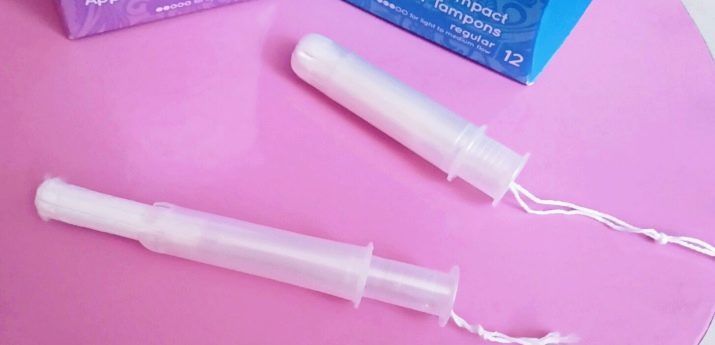All About Tampons with Applicator
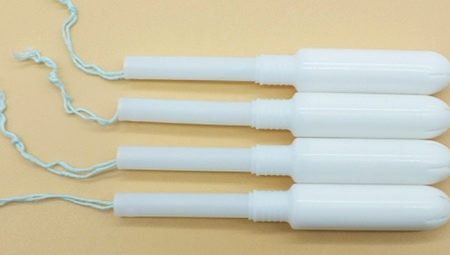
Every month, a certain volume of menstrual blood comes out of the female body, therefore, reliable protection against leakage is so important during this period. Modern industry offers a wide range of hygiene products. Many women use pads. However, they are not as reliable as tampons with an applicator.
What it is?
A tampon means a hygiene item placed inside the vagina and absorbing menstrual flow. It is made from pressed viscose or cotton. The device has a cylindrical shape with a rounded end. A thread is placed inside - it is designed for quick extraction. All tampons vary in absorbency and size.

Modern women have made these tampons the # 1 choice. This is due to their undoubted advantages:
- reliably prevent leakage;
- do not feel inside, do not constrain freedom of movement;
- allow you to comfortably carry out all the necessary daily activities, as well as play sports, dance, swim in the pool and ponds;
- prevent the appearance of unwanted odors;
- allow you to wear light and tight clothing.
The most popular are tampons with an applicator; they are presented in a wide range in stores and pharmacies. Thanks to this device, a cotton cylinder is easily inserted into the vagina to the desired depth. The advantage of models with an applicator is the absence of contact between the intimate area and hands - this increases their hygiene.
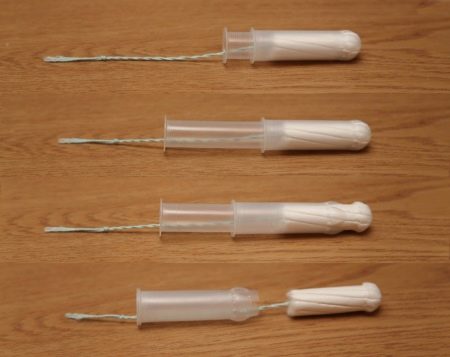
Applicators were invented in order to protect a woman's body from pathogenic bacteria and infectious diseases. Thanks to this device, the procedure for inserting a tampon has become sterile and at the same time simplified.
The applicator can be made of cardboard or plastic. The product has a smooth surface, due to which difficulties in the process of its use are completely excluded. The applicator design includes a pair of tubes of different diameters. One is necessary for the introduction of the hygiene product into the vaginal area, and the other pushes it to the optimal depth.
Differences from tampons without an applicator
In addition to tampons with an applicator, you can find hygiene products on sale without this device. This is one of the first options, such hygiene items are compressed material packed in a bag. Visually, the tampons of both types are practically the same. They have a cylindrical shape, a pointed tip, a smooth surface, and a tightly attached thread on the back. The only difference is that conventional products are injected by hand.
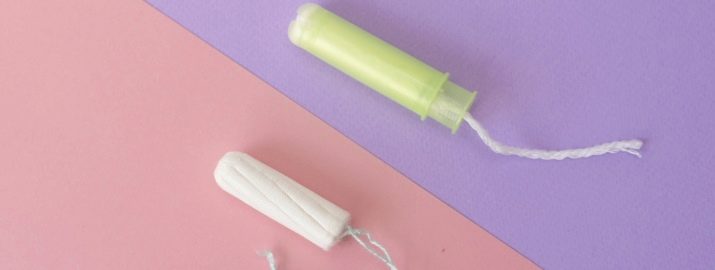
Immediately after removing the sealed membrane, the surface comes into contact with air masses and only then enters the vagina. Such a tool is considered less hygienic, since it cannot provide 100% sterility and safety for girls and women. Applicators, on the other hand, were created specifically in order to keep the injection process under control and to protect a woman from infection. A device with an applicator is a good choice for inexperienced users.
You should be aware that ordinary tampons without this device expand in diameter as they fill, and products with an applicator increase in length.
Advantages and disadvantages
The basic advantage of tampons with an applicator is to prevent the ingress of pathogenic microflora. During the insertion process, contact between hands and genitals is minimal. In addition, thanks to the adaptation, women are able to quickly and easily place a hygienic item at the required depth, thereby avoiding a feeling of discomfort and stiffness of movements.
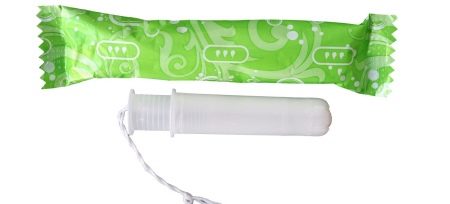
Some women believe that using tampons can be harmful to their health. However, this is possible only if the instructions for use are not followed. Nevertheless, there are situations in which this item is not recommended for use, and in some cases it is completely prohibited.
First of all, they include surgical interventions on the cervix.
Toxic shock syndrome. This is a pathological process associated with the penetration of Staphylococcus aureus, Clostridia and other pathogenic microorganisms into the circulatory system of a woman. If a woman previously experienced symptoms such as dizziness, weakness, fever and poor coordination after the introduction of tampons, there is a high risk of recurrence. Therefore, such hygiene products are contraindicated in this case.
Vaginal dryness. In such a situation, the introduction of a tampon can destroy the integrity of the mucous membrane and lead to a number of serious diseases.
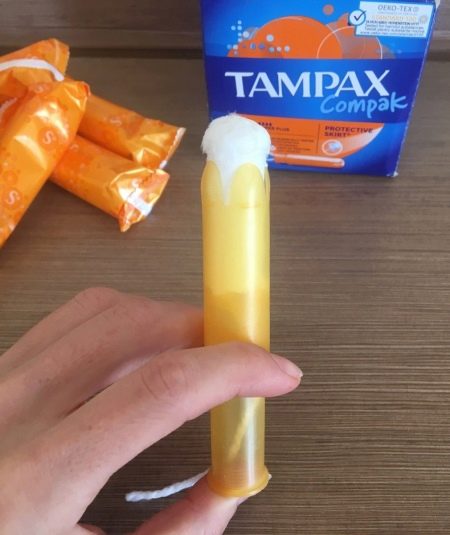
There are other contraindications:
- chronic and acute diseases of the genitourinary system;
- treatment of infectious vaginal diseases;
- the postpartum period, as well as the transferred artificial childbirth;
- abnormal structure of the genitals;
- individual intolerance and allergic reaction to the components that make up the tampon.
What are they?
The basic criterion that you need to rely on when selecting a product is its size. If you choose the wrong tampon, it may not be the most pleasant situation. For example, if bleeding is severe, tampons with minimal absorbency will leak and stain your laundry. And if the remedy is large, and the discharge, on the contrary, is scarce, then in the process of use, uncomfortable sensations are inevitable.Therefore, when choosing a hygiene product it is imperative to take into account the age of the user and the amount of discharge at different stages of critical days.
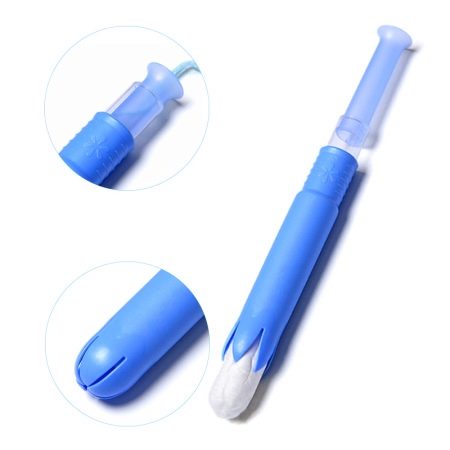
By materials of manufacture
Depending on the materials of manufacture, tampons can be cotton or viscose. There are products based on a combination of fibers. Typically, these tampons have a thin, smooth coating to keep them compact.
Synthetic materials are not very popular. They are highly absorbent and concentrate the maximum amount of menstrual protein. On the one hand, this creates an effective leakage protection. But at the same time, it forms a suitable environment for the production of toxins and the reproduction of pathogenic bacteria. This causes a violation of the microflora of the vagina and leads to hygienic disorders.
The very best products should be free of chemicals, synthetic fibers, dyes, fragrances and chlorine bleaches. The use of latex, formaldehyde and pesticides is not allowed.
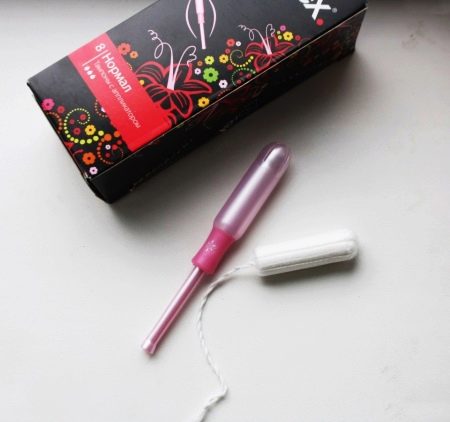
By the level of absorbency
Manufacturers offer several types of tampons depending on the absorption parameters.
- Mini - have the smallest absorbency. Optimal in the last period of menstrual flow. It is these products that are recommended for use by teenage girls.
- Normal - Recommended for nulliparous women with scant to moderate periods. Gynecologists advise starting the use of tampons with just this type, and then changing them to smaller or larger ones as they are absorbed. It's pretty simple to define. If after 3 hours of being inside the vagina the tampon marked "normal" has not filled, then the next time it can be replaced with a "mini" product. And if, before the passage of 3 hours from the moment of injection, the blood has already begun to seep, you should use a larger product.
- Super - used for discharge on days when the blood volume exceeds the normal value. Absorbs moisture well. Can be used by both women who have given birth and who have not given birth.
- Super plus - designed for the heaviest and strongest menses. These products are designed to be highly absorbent and provide maximum user comfort.


The absorbency level on the packaging is indicated by droplets. The minimum degree corresponds to 1-2 drops, the maximum - 4-5. Before going on the free sale, each batch of tampons undergoes mandatory testing for the level of absorption using artificial blood.
Top brands
o. b.
The most famous brand producing tampons with an applicator is o. b. It is the oldest manufacturer with a reliable reputation, all products of the brand are of high quality and ease of use. Tampons o. b. have a silky coating, thanks to which they take an anatomically comfortable shape inside the vagina.
Pros.
- Increased absorbency due to continuous pressing of raw fibers.
- The silky smooth finish allows you to insert the tampon in one quick motion.
- The design provides for spiral grooves. This increases the protective characteristics of the tampon, blood is retained in them and prevents contamination of the linen.
- Hygiene products provide a high degree of protection, making them suitable for use in the pool and during workouts. Even actively moving around, a woman can always be sure of her own freshness and cleanliness.
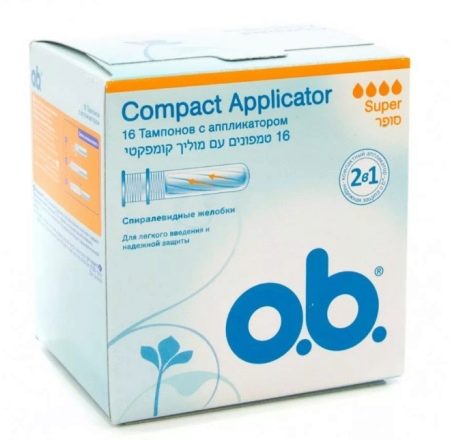
Kotex
The manufacturers of these tampons have claimed the unique absorbency of their products.... The company aims at continuous improvement of the technique of creating hygiene supplies so that tampons support a healthy vaginal microflora.
Pros.
- Tampons are made from compressed rayon fibers. The lower part of the product is additionally treated with an absorbent to create full protection.
- Each tampon is in an airtight container. It is easy to open it, for this it is enough to scroll the shell in different directions.
- Products provide high absorbency and provide reliable protection against unpleasant odors.
- The outer part is covered with a silky material, which greatly facilitates the introduction of products.
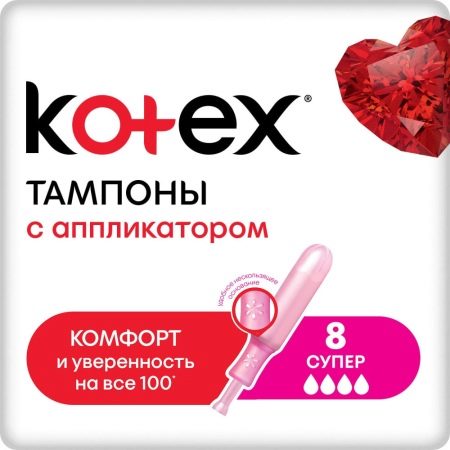
Tampax
One of the most popular brands. Offers products with a convenient applicator. Each item is sealed in a sealed package, it opens completely silently and can be further disposed of like any other household waste.
Pros.
- Tampons are made from refined 100% cotton with the addition of viscose. The top layer is natural fiber.
- The safety of such tampons for girls and women has been confirmed by research by independent laboratories, including the FDA.
- The absorbency of such a tampon is 5 times that of ordinary cotton wool.
- Due to the special grooves on the outer surface, blood is retained, and the liquid is directed into the hygienic tampon.
- There is a frill at the bottom for added protection against leaks.
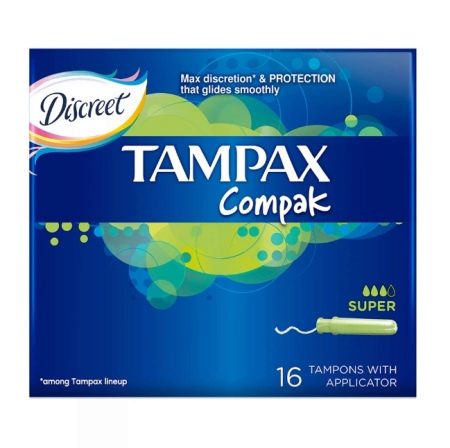
Products of the brand have been very popular in recent years. Libresse (Sweden) and Bella (Poland). Ola, Milan and Natalie are represented on the market from domestic brands. The choice in stores and pharmacies is wide, so every woman, depending on her preferences and capabilities, can choose the best solution for herself.

Instructions for use
In conclusion, we will tell you more about how to properly use hygienic tampons with an applicator.
The introduction process includes a few simple steps.
- First, wash your hands, preferably with antibacterial agents.
- You need to remove the tampon from the individual packaging. Then the inner tube of the applicator is carefully pulled out to the level of the outer one; a small click will signal its readiness.
- Next, you need to take a comfortable position. Alternatively, you can throw one leg on a small hill, and the other stay on the floor. It is very important to relax your pelvic muscles.
- The lower section of the outer tube of the applicator is carefully clamped with the thumb and forefinger, and then it is inserted to the required depth with the rounded end forward. The optimal level is when the fingers come into contact with the skin of the intimate zone.
- The inside of the applicator is then pushed out with the index finger.
- The swab is inserted. All you have to do is remove the applicator from the vagina and throw it into the trash can.
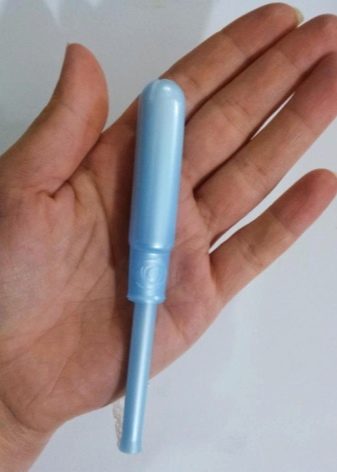
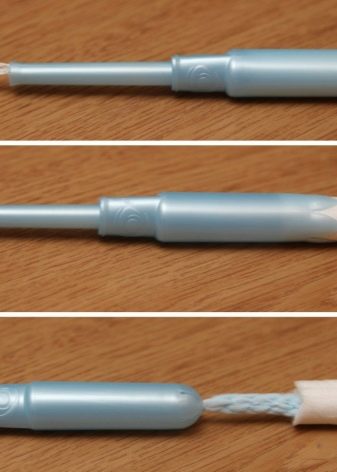
In order to make sure that the introduction is correct, it is advisable to walk a little. If you feel discomfort or soreness, then you have inserted the product at the wrong angle or at the wrong depth.
One tampon can be used no longer than 3-4 hours. However, there are situations when replacement has to be made earlier. It is easy to determine - you just need to pull the product slightly by the thread. If it comes out easily, then it's time to change the tampon. If you feel some resistance, then it is not completely filled and you can hold it for a while.
To extract, you need to perform a number of actions.
- Treat your hands with an antibacterial agent or wash with soap and water.
- Then you need to take a comfortable position and relax your muscles. If they are tense, then removing the tampon will be accompanied by pain and discomfort.
- Find the thread and gently pull down and slightly forward, until the tampon is completely out of the vaginal opening.
- After that, wrap the sanitary item in paper or a bag and throw it in the trash can. Keep in mind - you cannot throw it down the toilet, because the cotton wool will swell in the sewer system and cause a blockage in the pipes.
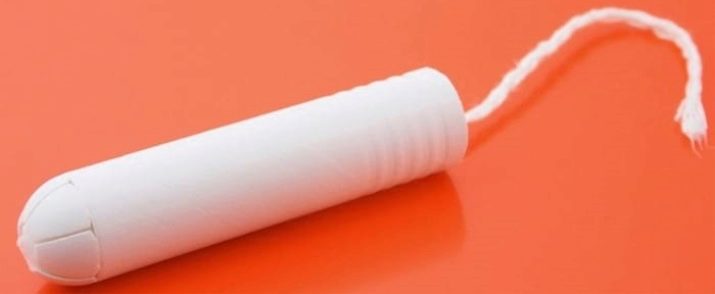
There are many myths surrounding the use of tampons with an applicator. Here are the main ones.
- Myth 1. The product may fall out when worn. This is not true. If you insert the tampon correctly, the vaginal muscles will hold it inside.
- Myth 2. The tampon prevents urination. This is absolutely impossible, since the tampon is inserted into the vaginal opening, and urine is excreted through the urethra located nearby.
- Myth 3. The applicator may break and the product will remain inside the body. Indeed, this happens when using products of cheap brands. If such a nuisance still occurs, you can always try to remove the product with your hands or seek help from a doctor.

The question of the use of tampons with an applicator by virgins is debatable. There is an opinion that defloration can occur when using a tampon. However, by nature, there is an opening in the hymen for the removal of menstrual flow. At the stage of puberty, the girl's hymen is quite elastic, so a cotton cylinder can be inserted inside the vaginal opening even if the girl has not yet begun sex. The main thing is to choose a product of the minimum size.
But when removing the tampon, difficulties can arise. This is due to the fact that due to the absorption of blood, the tampon expands, and if it is inaccurately removed, there is some risk of traumatic effects on the hymen.
And also it must be borne in mind that in some cases the hymen has low elongation. Then it can be damaged even with normal removal. In addition, when using tampons by girls who are not sexually active, there is always a risk of nonspecific inflammation of the vaginal cavity. It can be very difficult to cure such pathologies. This is why it is so important to ensure maximum sterility and hygiene of the procedure - the optimal solution in this case would be a tampon with an applicator.
